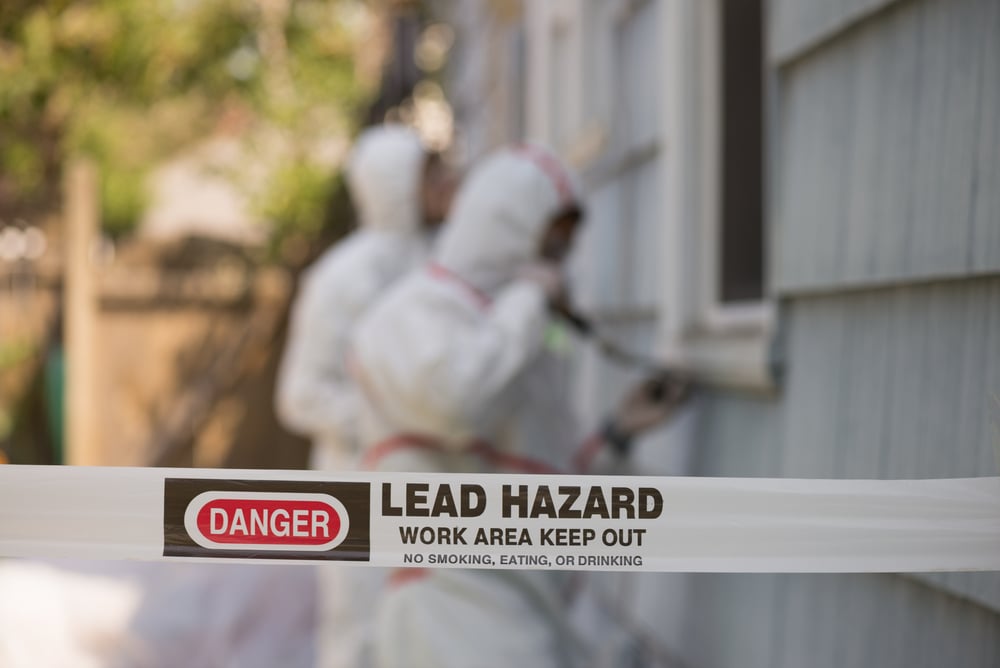Lead paint poisoning is a serious and often overlooked health risk, particularly in the context of renovating older homes. This blog post aims to shed light on the dangers of lead paint, the risks associated with renovations, and how to recognize and respond to lead poisoning.
Understanding Lead Paint Poisoning
Lead-based paints were widely used in homes before 1978. When these paints deteriorate or are disturbed during renovation activities, they release lead dust and chips that can be hazardous. Lead poisoning can occur when lead dust is inhaled or ingested, making renovations in older homes a potential risk factor.
The Hidden Dangers in Renovations
Renovating a home built before 1978 requires special precautions. Disturbing old paint layers through activities like sanding, cutting, or demolition can release lead particles into the air. These particles are so small that they can easily be inhaled or settle on surfaces where children may ingest them.
Safely Renovating Homes Built Before 1978
If your home was built before 1978, it’s likely to contain lead-based paint. During renovations, it’s vital to take steps to minimize exposure to lead dust. Here are key practices to follow:
- Hire a Lead-Safe Certified Professional
- For any significant renovations, it’s recommended to hire a contractor who is certified in lead-safe work practices. These professionals understand how to minimize dust and are equipped to handle lead-containing materials safely.
- Test for Lead
- Before starting any work, have your home tested for lead by a certified inspector. This will guide you on where extra precautions are needed.
- Plan and Isolate the Work Area
- Seal off the work area with plastic sheeting to prevent dust from spreading.
- Ensure that the space is well-ventilated to the outside, reducing lead dust concentration.
- Use Lead-Safe Work Practices
- Avoid dry sanding or scraping, which can create large amounts of lead dust. Instead, use wet sanding methods.
- When removing old paint, consider using low-temperature heat guns and wet hand scraping.
- Wear Protective Gear
- Workers should wear appropriate personal protective equipment (PPE), such as masks, gloves, and goggles, to prevent lead ingestion or inhalation.
- Clean-Up Thoroughly
- Regularly clean the work area with a HEPA-filter vacuum and wet mopping to prevent lead dust accumulation.
- At the end of each day, ensure a thorough clean-up to eliminate lead particles.
- Safe Disposal of Debris
- Dispose of all renovation debris and waste materials in accordance with local regulations to prevent environmental contamination.
- Post-Renovation Testing
- After the work is completed, have your home tested again for lead to ensure it’s safe for occupancy, especially in areas where children and pregnant women are present.
Recognizing the Signs and Symptoms
Lead poisoning often goes unrecognized due to its subtle and non-specific symptoms. However, prolonged exposure can have serious health consequences, especially in children. Key signs and symptoms include:
- In Children: Developmental delays, learning difficulties, irritability, loss of appetite, weight loss, sluggishness, abdominal pain, vomiting, constipation, hearing loss, and seizures.
- In Adults: High blood pressure, joint and muscle pain, difficulties with memory or concentration, headache, abdominal pain, mood disorders, reduced sperm count, and miscarriage or premature birth in pregnant women.
What to Do If You Suspect Lead Poisoning
If you suspect that you or someone in your home has been exposed to lead, it’s crucial to act promptly:
- Get Tested: A simple blood test can detect lead poisoning. It’s especially important for children living in or frequently visiting a house built before 1978.
- Consult a Professional: Before starting renovations, consult a professional who is trained in lead-safe work practices.
- Maintain Good Hygiene: Regularly wash hands and toys to reduce the risk of ingesting lead dust.
- Control Dust During Renovations: Use wet sanding techniques, HEPA-filter vacuums, and plastic sheeting to contain dust.
- Eat a Healthy Diet: A well-balanced diet can help reduce the absorption of lead. Foods rich in calcium, iron, and vitamin C are particularly beneficial.
Prevention is Key
Preventing lead exposure is far more effective than treating lead poisoning after it occurs. If you live in or are renovating an older home, it’s crucial to be aware of the risks and take appropriate precautions. Remember, lead poisoning is entirely preventable with the right knowledge and actions. Renovating a home built before 1978 requires careful planning and execution to avoid lead exposure.
By following these guidelines and working with professionals trained in lead-safe practices, homeowners can significantly reduce the risk of lead poisoning and create a safe living environment.


